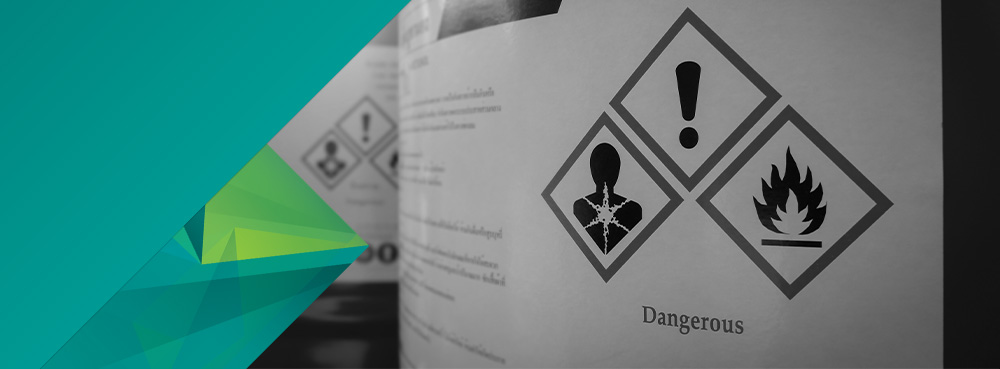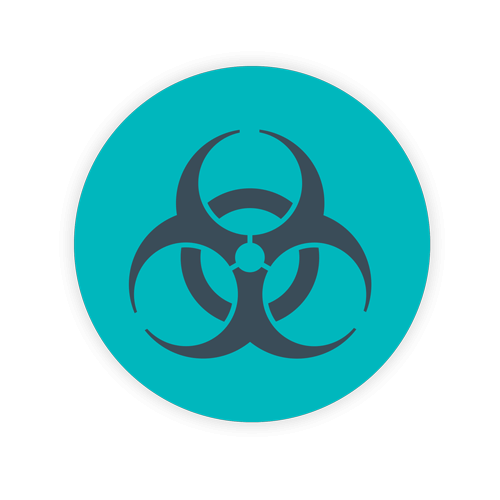What Is RCRA Hazardous Waste?

In order to maintain compliance with federal regulations for hazardous waste management, it’s important not only to know where to look for those laws and regulations, but what they mean. The Resource Conservation and Recovery Act (RCRA) is a piece of legislation that mandates oversight in regard to a nationally recognized waste management program. In other words, by following RCRA laws and regulations, states are on the same page when it comes to hazardous waste management and disposal processes.
TOPICS WE COVER:
3 / Hazardous Waste Considerations
4 / Turn to Experts for Compliance
Defining RCRA
The Resource Conservation and Recovery Act (known hereafter as RCRA) defines a “cradle-to-grave” approach to waste management processes. This includes potentially hazardous, infectious, or other wastes that may prove harmful or dangerous to humans and the environment. Basically, the regulations set forth policies for safe and compliant management and cleanup of both solid and hazardous wastes. The program also focuses on reducing the volume of waste that heads to landfills and targets items, tools, or equipment that can be recycled or reused.
Every state in the country also has their own specific statutes and laws regarding hazardous waste management, but they must also follow the guidelines of the EPA and RCRA. You are not allowed to pick and choose which rules to follow – as such, hazardous waste generators need to be aware of not only where to find state guidelines, but federal guidelines as well in order to maintain compliance.
RCRA Hazardous Waste
Hazardous waste processes regarding identification, classification, generation, management, and disposal are defined and explained by RCRA. This information can be found in the Code of Federal Regulations (CFR), Title 40, Parts 260 through 273.
Numerous parts or sections of this code include:
- Part 260: an overview of the hazardous waste management system
- Part 261: identification and listing of hazardous waste
- Part 262 and 263: standards applicable to generators and transporters of hazardous waste
- Part 264: standards for operators and owners of hazardous waste treatment, storage, and disposal facilities
- Part 270: information regarding the EPA’s permit programs and specifically the hazardous waste permit program
As mentioned, states must follow federal guidelines. However, be aware that many states also have their own standards, which can be even more stringent and detailed than those provided by the federal government.
The definition of hazardous waste is found in §261.3 of the Code of Federal Regulations. It is rather long-winded, but basically defines hazardous waste as a waste that exhibits certain characteristics that include toxicity, flammability, reactivity, and corrosivity. Within RCRA regulations, specifics regarding each of the characteristics is also provided.
For example, ignitability can mean a solid that has the potential to spontaneously combust, a compressed gas, or liquids with fumes that have a low flash point such as gasoline or alcohol. Corrosive substances can include anything that has the capability of literally eating through a container and causing the release or leakage of harmful materials. Some examples include sulfuric or hydrochloric acid or battery acid.
Reactive substances are dangerous due to their instability, such as mixtures that have the potential to release harmful gases when mixed, like certain cleaning solutions and water. In regard to toxicity, RCRA currently maintains a list of approximately 60 contaminants with toxicity characteristics. A listing of hazardous wastes can be found in subpart D of Part 261 (identification and listing of hazardous waste) under Title 40.
It’s important for waste generators to know the type, the characteristics of, and the volume of waste produced in any environment, whether in healthcare, business, or industry. It is the responsibility of the waste generator to ensure that proper and compliant procedures are followed from the moment that waste is generated or produced to the moment it is ultimately disposed of. That is the cradle-to-grave approach.
Hazardous Waste Considerations
Every state hazardous waste generator can access a number of resources for additional information, guidance, policies, and checklists. Most states across the country are authorized by the EPA to oversee and implement their own hazardous waste programs that comply with the regulations of RCRA. Such programs at the state level must at the minimum meet the federal requirements, but states are allowed to adopt even more stringent requirements on top of those.
Standards of the Code of Federal Regulations, Title 40 as well as those of RCRA are detailed and specific. For example, Part 262, subparts A and B specifically focus on requirements applicable to small and large quantity generators. Regulations cover:
- General requirements
- Manifest tracking numbers, printing, and how to obtain manifests
- Hazardous waste determination and record-keeping
- EPA identification numbers and guidelines for re-notification for small and large quantity generators
- Conditions that must be met for exemption for a small or large quantity generator that accumulates hazardous waste
Subpart C of Part 262 provides detailed information regarding packaging, labeling, marking, and type of placards for hazardous waste for pre-transport (see sections 262.30 through section 262.33).
 Details are important through every step of the waste management process. For example, section 262.32 (marking), requires that generators “…mark each package of hazardous waste in accordance with the applicable Department of Transportation regulations on hazardous materials under 49 CFR parts 172 and 173.” What does that mean for you? It means following the guidelines regarding description of hazardous materials on shipping papers along with a hazardous waste manifest.
Details are important through every step of the waste management process. For example, section 262.32 (marking), requires that generators “…mark each package of hazardous waste in accordance with the applicable Department of Transportation regulations on hazardous materials under 49 CFR parts 172 and 173.” What does that mean for you? It means following the guidelines regarding description of hazardous materials on shipping papers along with a hazardous waste manifest.
Section 172.205 states “no person may offer, transport, transfer, or deliver hazardous waste (waste) unless an EPA form 8700-22 and 8700-22A (when necessary) hazardous waste manifest (manifest) is prepared in accordance with 40 CFR 262.20 and is signed, carried, and given as required of that person by this section.”
Part 173.1 through 173.477 provide very specific information for shippers, meaning general requirements for shipments and packaging.
In other words, there is no excuse for not knowing the rules. The onus of responsibility is on the waste generator. It is your responsibility to ensure that whomever you contract with to transport any potentially hazardous materials off-site is also in compliance with federal and state guidelines.
Turn to Experts for Compliance
Daniels Health is aware that finding, reading, and navigating through pages of sometimes convoluted language in regard to hazardous waste management processes is not only time-consuming but often frustrating. However, adherence to such laws is vital in protecting not only for your employees, but the general public, regional wildlife, and your local environment. Fines and penalties for noncompliance can be staggering.
Turn to experts with the experience, the knowledge, and the resources to provide products that help you maintain compliance. We also offer expert resources and guidance to ensure that you follow safe waste management processes for your facility. For information on our products, services, and resources, contact Daniels Health today.
Let's Talk!
Your time is valuable, and we don’t want to play hard to get. You can either phone us directly on the details listed on our contact page, or feel free to fill out this short form and one of our team members will get back to you as quickly as possible.
